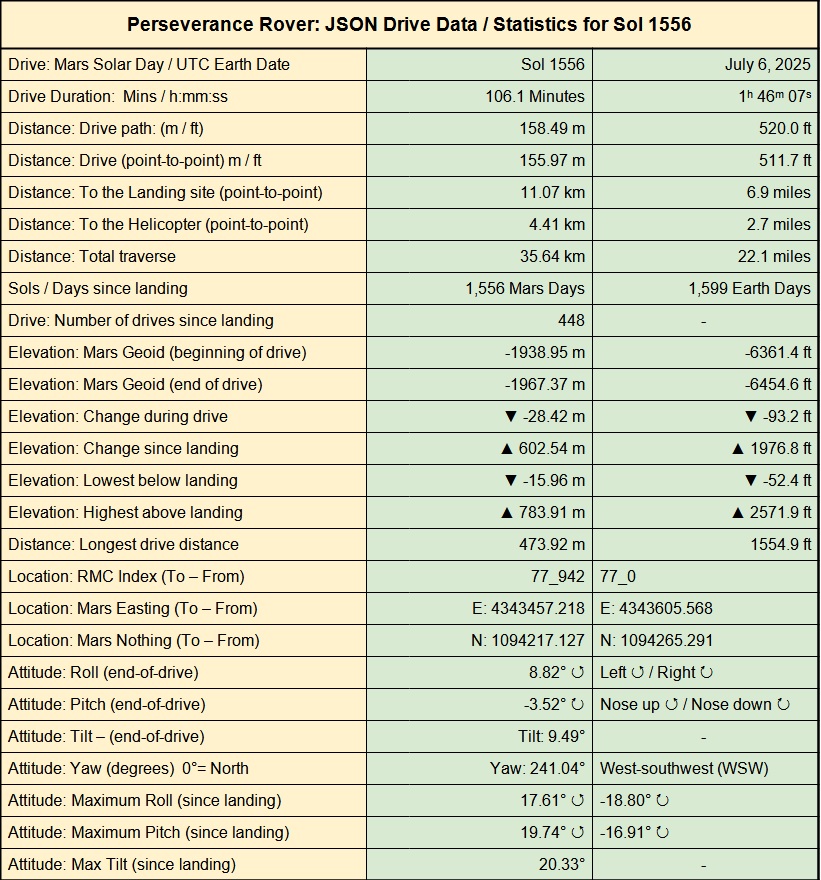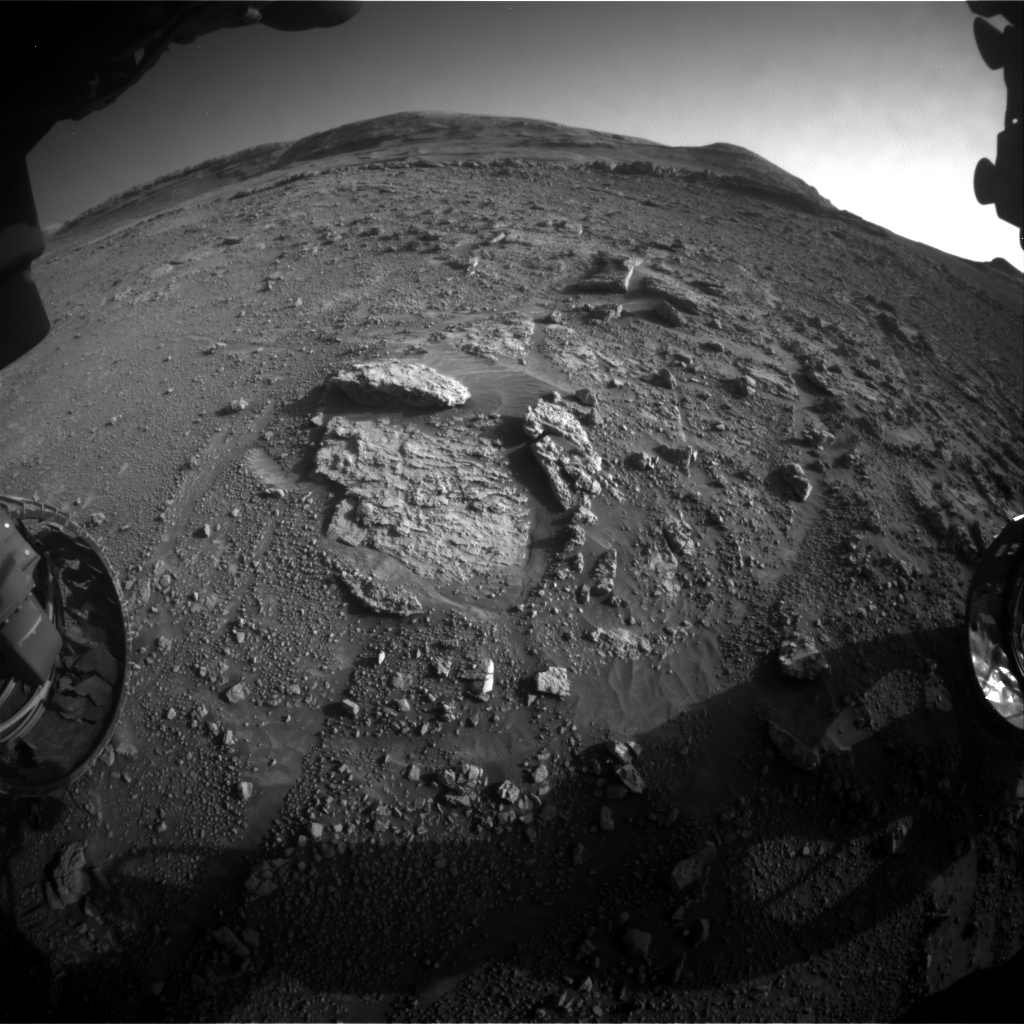This image sees the sensor head of the Alpha-Particle X-ray Spectrometer (APXS) instrument placed on a target to acquire data. The image was taken by one of the Front Hazard Avoidance Cameras (Front HazCam) onboard NASA's Mars rover Curiosity on Sol 4590 July 5, 2025 at 11:24:54 UTC. Credits: NASA/JPL-Caltech
The APXS for MSL is an improved version of the APXS that flew successfully on Pathfinder and the Mars Exploration Rovers Spirit and Opportunity. The MSL APXS takes advantage of a combination of the terrestrial standard methods Particle-Induced X-ray Emission (PIXE) and X-ray Fluorescence (XRF) to determine elemental chemistry. It uses curium-244 sources for X-ray spectroscopy to determine the abundance of major elements down to trace elements from sodium to bromine and beyond.
The instrument consists of a main electronics unit in the rover's body and a sensor head mounted on the robotic arm. Measurements are taken by deploying the sensor head towards a desired sample, placing the sensor head in contact or hovering typically less than 2 cm away, and measuring the emitted X-ray spectrum for 15 minutes to 3 hours without the need of further interaction by the rover. At the end of the measurement, the rover retrieves the science data of 32 kilobytes, containing up to 13 consecutively taken spectra and engineering data. The internal APXS software splits the total measurement into equal time slots with an adjustable cycle time parameter. This allows us to check for repeatability and to select spectra with sufficient spectral quality.
The MSL APXS can activate an internal Peltier cooler for the X-ray detector chip. This results in a sufficient spectral resolution (FWHM) of below 200 eV at 6.4 keV below ~ -5 deg C and best FWHM of < 150 eV below ~ -15 deg C environmental temperature. Compared to the APXS on MER, where the best FWHM was reached at temperatures below ~ -45 deg C, this allows a significantly larger operational time window for APXS analysis.
The MSL APXS has approximately 3 times the sensitivity for low Z (atomic number) elements and approximately 6 times for higher Z elements than the MER APXS. A full analysis with detection limits of 100 ppm for Ni and ~ 20 ppm for Br now requires 3 hours, while quick look analysis for major and minor elements at ~ 0.5% abundance, such as Na, Mg, Al, Si, Ca, Fe, or S, can be done in 10 minutes or less.
On MER, the elements detected by the APXS in rock and soil samples are typically Na, Mg, Al, Si, P, S, Cl, K, Ca, Ti, Cr, Mn, Fe, Ni, Zn, and Br. Elevated levels of Ge, Ga, Pb, and Rb were found in some of the MER samples.
The sampled area is about 1.7 cm in diameter when the instrument is in contact with the sample. A standoff results in gradually lower intensity and an increased diameter of the measured spot. Low Z element X-rays stem from the topmost 5 microns of the sample, higher Z elements like Fe are detected from the upper ~50 microns. Sample preparation is not needed; the APXS results average the composition over the sampled area and the oxide abundances measured are renormalized to 100%. However, on MSL, a dust removal tool (brush) is available to remove loose material from a rock surface before making an APXS measurement.















Update - The JSON's were just released, see new post